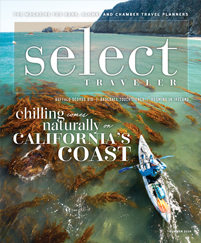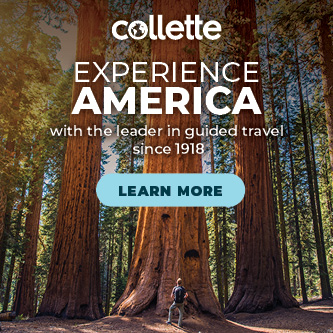Oklahoma
Route 66 was conceived in Oklahoma. Cyrus Avery, a Tulsa businessman and Oklahoma’s first highway commissioner, spearheaded the national committee that created the U.S. Highway System. He championed a Chicago-to-Los Angeles route and picked the now famous double sixes as the road’s official number.
The country’s longest section of Route 66 is in Oklahoma, where visitors can travel 400 miles of old Route 66 without getting on the interstate. The elegant Coleman Theatre in Miami presented vaudeville shows and movies and still offers a full entertainment schedule. A local mining magnate built the opulent structure, with its Louis XV interior and 1929 “Mighty Wurlitzer” pipe organ that dazzled audiences from the 1930s through today. Big-city theaters of the era housed stylish shops, and in that same spirit, the theater offers exclusive boutiques. Group options include a tour and lunch served onstage where Will Rogers and fan dancer Sally Rand performed, or a plated dinner in the ballroom along with a tour and a classic movie.
Northeast of Tulsa, Totem Pole Park near Chelsea claims the world’s largest concrete totem pole. This quirky stop along the Mother Road started in 1937 as a tribute to Native Americans. Additional totems are scattered throughout the park, and the 11-sided Fiddle House contains ornate, hand-carved fiddles.
Between Tulsa and Oklahoma City, one-of-a-kind memorabilia epitomizes the Route 66 Interpretive Center in Chandler. A 1937 National Guard armory of hand-chiseled sandstone bricks houses the museum. Visitors hop in the seats of a 1930 Model-A Ford, a 1948 Willys Jeep and a 1965 red Mustang while watching short informational films. The museum’s collection includes historic brochures, travel guides, vintage billboards and virtual “hotel rooms.” On the outskirts of Oklahoma City, an iconic 66-foot-tall pop bottle landmarks Pops. This modern roadside attraction features more than 12,000 soda pop bottles and 650 different kinds of ice-cold soda from which to choose, plus a diner serving meals and snacks.
A must-see in Elk City near the Texas border is the National Route 66 and Transportation Museum. A replicated drive-in theater where visitors watch clips from classic period movies features a 1959 red Impala. The Route 66 Museum follows the journey from Illinois to California with photos, murals, vehicle exhibits and first-person audio accounts from life along the Mother Road.
New Mexico
For many travelers on Route 66, New Mexico marked their introduction to the Southwest. Native American culture blended with the neon signs of hotels and restaurants inviting travelers to stay and spend their money. At the Texas border, groups enter New Mexico across a vast prairie that eventually leads to the high desert and adobe villages.
The 20-mile stretch of original highway from Glenrio, at the Texas state line, to the tiny town of San Jon is part of the road that John Steinbeck described in “The Grapes of Wrath.” From there, the town of Tucumcari basked in the Mother Road’s success. Today, travelers can stay at the pink-stucco Blue Swallow Motel, built in 1939; motor-court garages are located between the rooms, and the lobby gift shop sells souvenirs. The city’s Route 66 Photo Museum showcases key sites and events along the Mother Road, and the Art Deco Odeon theater still shows movies. Tee-Pee Curios trading post makes a great photo op and sells kitschy souvenirs and memorabilia.
Back on the road, the Blue Hole of Santa Rosa lies in the middle of the desert, and the aqua waters became an oasis for Route 66 travelers. In Albuquerque, Central Avenue follows the former Route 66 and features preserved motel courts, diners, vintage neon signs and numerous attractions. Central Avenue connects numerous neighborhoods, including 100-year-old Nob Hill, where the original Jones Motor Company, a National Historic Landmark, is now Kelly’s Brew Pub, with gas station pumps still outside. Another landmark, Skip Maisel’s Indian Jewelry and Crafts, offers wholesale pricing on Native American jewelry. Down the street, the Pueblo Deco KiMo Theater celebrates its 90th birthday this year with special events.
Heading toward Gallup, groups can order green chili cheeseburgers, a New Mexico staple, at the 66 Pit Stop in Laguna Pueblo. On the state’s western edge, Gallup is known as the “Indian Capital of the World.” During its heyday, Gallup’s El Rancho Hotel was where Hollywood stars stayed while shooting films in the area. Its 49er Lounge has served tequilas and hand-squeezed margaritas for 75 years, and the adjacent restaurant can seat groups of up to 250 people.
“Gallup’s decades-old Richardson’s Trading Post has an iconic neon sign out front and sells more turquoise than you’ve probably seen in your lifetime, plus beautiful rugs,” said Heather Briganti, communications director for the New Mexico Tourism Department. “They’re also knowledgeable about each piece.”









